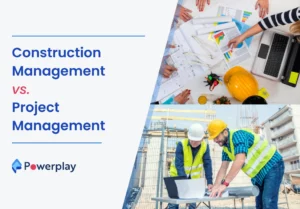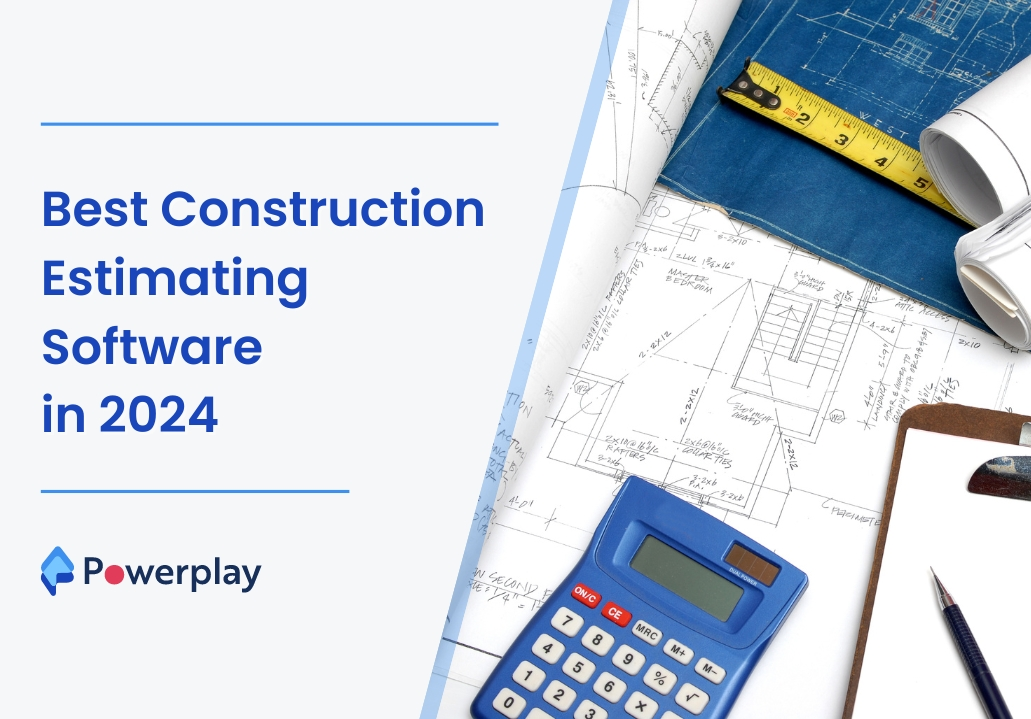Digital Transformation: The Future of Measurement Books in Construction
-
Kumar Abhishek Anand
- October 11, 2023
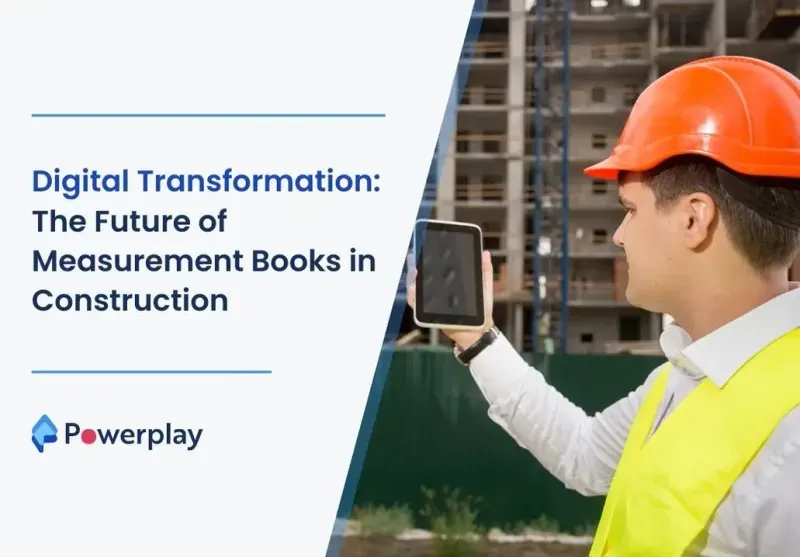
Are you still using outdated tools to record the measurements? If yes, I am sure you are having a hard time jotting the perfect measurements. While the world of construction rapidly evolving, traditional measurement books are becoming tools of the past. As India’s tier-1 and tier-2 cities witness unprecedented urbanisation and development, construction owners are seeking innovative solutions to improve efficiency, accuracy, and productivity. Embracing digital transformation in the form of construction technology offers a promising future for the industry, revolutionising the way measurements are recorded, managed, and analysed. In this blog, we delve into the significance of digital transformation and how it will shape the future of measurement books in the construction sector.

Table of Contents
Toggle1. The Inefficiency of Traditional Measurement Books:
For decades, construction professionals have relied on manual measurement books to record critical data, including dimensions, quantities, and materials used. While these books served their purpose in the past, they suffer from inherent drawbacks that hinder progress in today’s fast-paced construction landscape. From human errors in transcription to difficulties in sharing data, traditional measurement books prove to be time-consuming and error-prone, potentially leading to costly mistakes and project delays.
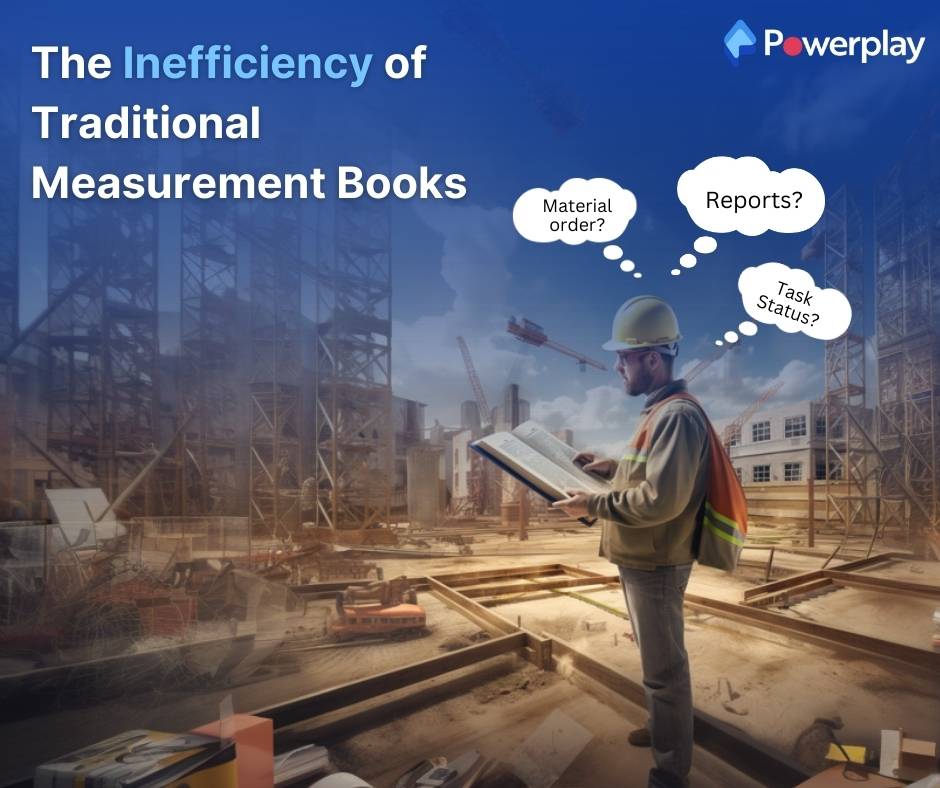
2. The Emergence of Digital Measurement Solutions:
Digital transformation has opened doors to cutting-edge measurement tools that streamline the construction process. Mobile apps and cloud-based platforms are revolutionising how data is captured and stored, enabling real-time collaboration and data access across teams. These digital solutions leverage technologies such as Artificial Intelligence (AI) and Building Information Modeling (BIM) to automate measurements accurately, optimising resource utilisation and enhancing decision-making.

3. Advantages of Embracing Digital Transformation:
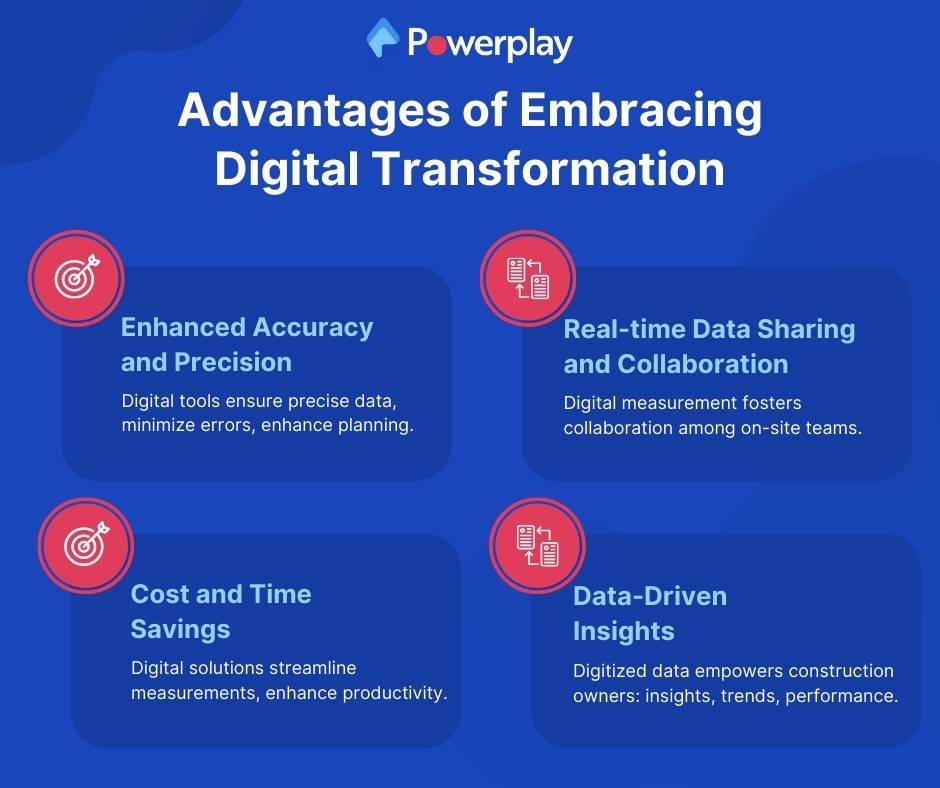
a. Enhanced Accuracy and Precision: Digital measurement tools eliminate the risk of manual errors, ensuring accurate and precise data capture. With these tools, construction owners can rely on trustworthy information for planning and execution, reducing costly rework.
b. Real-time Data Sharing and Collaboration: Construction projects involve multiple stakeholders working together. Digital measurement solutions enable seamless sharing of data, allowing teams to collaborate efficiently, whether they’re on-site or remotely located.
c. Cost and Time Savings: Streamlined measurement processes save time and resources. By embracing digital solutions, construction owners can reduce paperwork, enhance productivity, and optimise project timelines, leading to cost savings in the long run.
d. Data-Driven Insights: Digitised measurement data offers valuable insights for informed decision-making. Construction owners can analyse trends, identify potential risks, and improve project performance using data analytics.

4. Overcoming Challenges in Adoption:
While digital transformation presents numerous benefits, its implementation may encounter some resistance. Construction owners in India’s tier-1 and tier-2 cities may face challenges like initial investment costs, technology literacy, and workforce training. However, industry leaders must recognise the long-term advantages and partner with tech providers offering user-friendly and cost-effective solutions.
5. Success Stories of Digital Transformation:
Several Indian construction companies have already embraced digital transformation and reaped its rewards. From streamlining material management to achieving better project coordination, these companies have showcased how technology can revolutionise traditional processes.
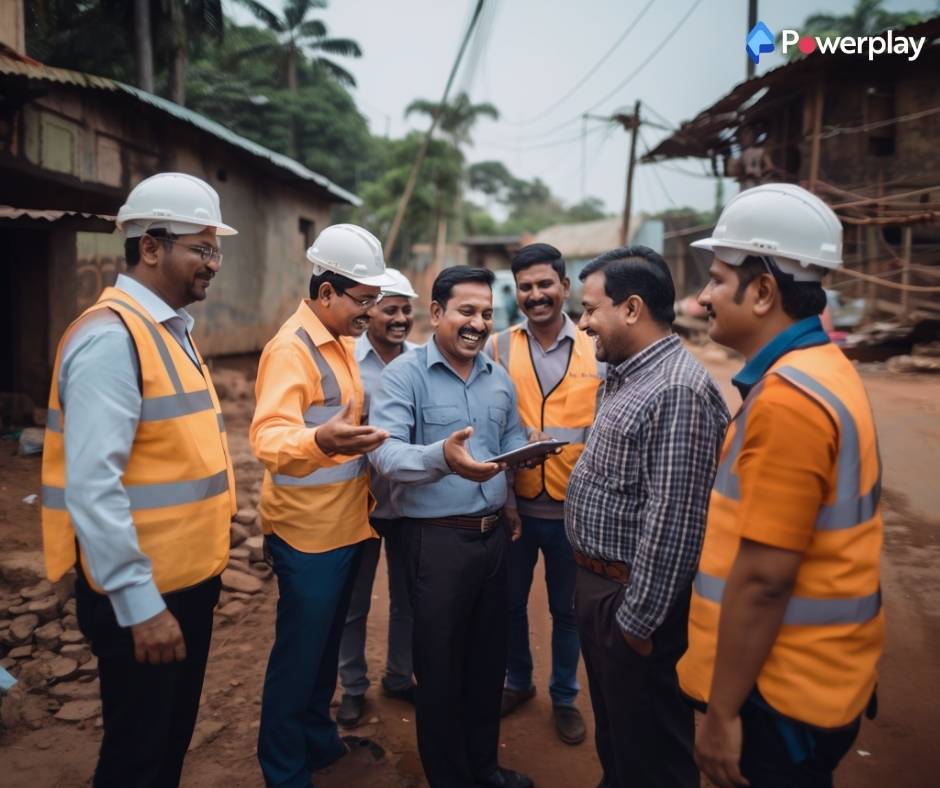
Conclusion
The construction industry in India’s tier-1 and tier-2 cities stands on the brink of a digital revolution. Embracing digital transformation in measurement practices offers construction owners an unprecedented opportunity to boost efficiency, reduce errors, and increase productivity. By leaving behind the limitations of traditional measurement books, the construction sector can leap forward into a future where data-driven decision-making reigns supreme. Those who dare to embrace change and adopt cutting-edge technologies will be at the forefront of shaping the future of construction and unlocking its full potential in the digital age.
Share
Kumar is a digital content professional with more than 2 years of experience in Blog writing, copywriting and scripting. His passion lies in the art of creating convincing content that plays a major role in converting leads for SAAS businesses.
